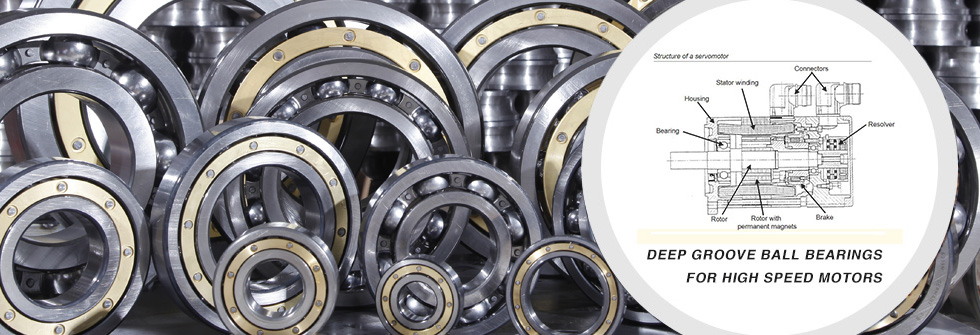Better bearings for wind turbines
2016-01-05Wind turbine makers are taking a more standardized approach to bearings for gearboxes.
It is not much of an exaggeration to say that the whole wind turbine industry rides on bearings. Wind turbines operate under arduous conditions. The bearings used in them must work reliably and have a long lifespan. For example, the design service life of rolling bearings in wind turbines is 175,000 operating hours.
It is useful to review the numerous bearing types found in the typical utility scale wind turbine. Cylindrical roller bearings are often the choice for handling high radial loads in both gear boxes and generators. Multi-row and full complement versions are available for even higher radial loads. For example, it is possible to find these types of bearings with dynamic and static load ratings (Cr and C0r) of 2,672 and 5,890 kN. Also available are special specifications with optimized geometry and customized designs, and special coatings to prevent corrosion and for enhanced tribological properties. These bearings often come in a modular system that allows for standardization of planet wheel bearings.
Tapered roller bearings are suitable for high radial and thrust loads. They are able to take up tilting moments and, when paired, thrust loads in both directions. For example, it is possible to find these types of bearings with dynamic and static load ratings (Cr and C0r) of 415 and 800 kN. Manufacturers often create custom tapered roller bearing designs for use in gear boxes.
Spherical roller bearings generally find use handling applications involving large radial loads and low-to-medium speeds. Their rollers that are thick in the middle and thinner at the ends with a race shaped to match. They can thus adjust to support misaligned loads. But they have more friction than a comparable ball bearing because different parts of the spherical rollers run at different speeds on the rounded race, thus there are opposing forces along the bearing/race contact. They are typically used for main shafts.
Four-point contact ball bearings consist of radial single-row angular contact ball bearings with raceways that are designed to support axial loads acting in both directions. Radial loads can be supported up to a certain fraction of the axial load. These bearings take up considerably less axial space than double row bearings. The inner ring is split into two halves. This both permits easy mounting and enables use of a large number of balls in the bearing to boost load-carrying capacity. The outer ring with ball and cage assembly can mount separately from the two inner ring halves. These bearings are typically used in high-speed output shafts.
Deep groove ball bearings typically handle applications with high rotating speeds and where there are medium-high radial and thrust loads in one or both directions. In a deep-groove bearing, the race dimensions are close to the dimensions of the balls that run in it. This lets deep-groove bearings support high loads. Numerous clearance and tolerance classes are available for different operating conditions. This type of bearing is used mainly in generators.
Electrically insulated bearings prevent damage caused by passage of electric currents through the bearing elements. They do so through use of an insulation coating (ceramic oxide) on the outer or inner ring, or by using ceramic oxide rolling elements, depending on size and type of bearings. (Ceramic rolling elements tend to go into smaller bearings.) These bearings are 100% interchangeable with standard bearings.
The choice of bearing depends on the available space -- especially when replacing existing bearings –- as well as application requirements. To further boost load capacity, the cylindrical roller bearings use internal designs that can handle higher loads than standard types. These bearings are fitted with an inner race-guided, one-piece brass cage, which contains inspection grooves that let an endoscope assess the condition of the inner race surface. For higher loads and wider gears, the bearings can be assembled into sets of two, three or four bearings with various spacer rings.
The modular concept has numerous advantages: The planetary bearings can all have a standard design, and the planetary gear design can be unified to handle the first and second gear stage as well as various gearbox sizes. This practice reduces the number of rolling bearing variants. The modular design also simplifies the task of adapting bearing sets to the requirements of each gear stage. Use of a one-piece solid brass cage keeps rolling elements aligned even during rapid acceleration. And lubrication grooves simplify lubrication of the planetary gear bearings.
Linqing Nine Star Bearing Science & Technology Co., Ltd
(Insulated bearing, Hybrid ceramic bearing and brass cage DGBB)
Follow us via E-mail info@jxkjzc.com; Website www.ninestarbearing.com.











